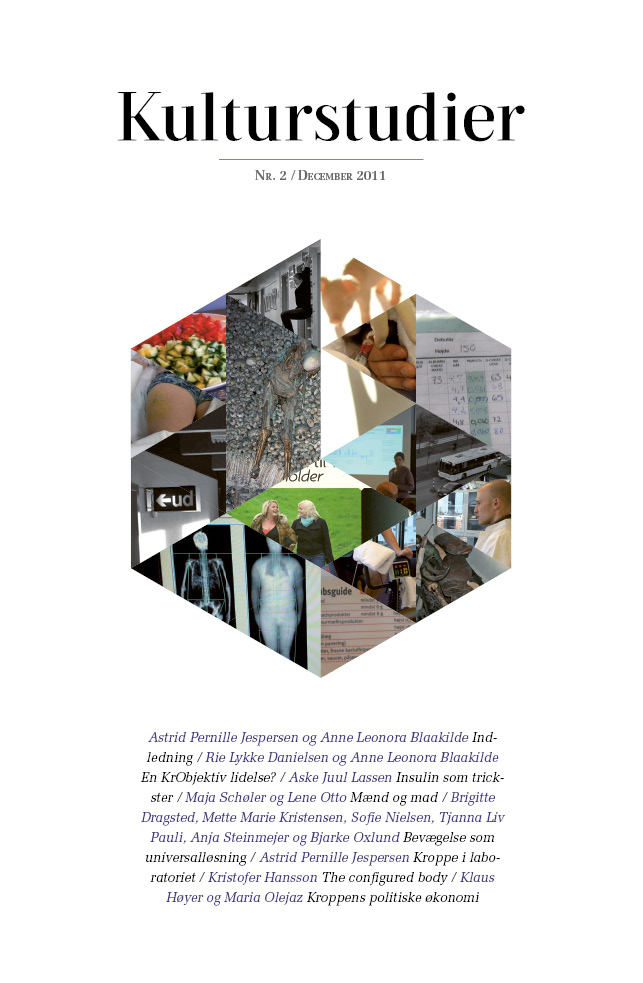Insulin som trickster: Grænsearbejde i hverdagen med type 2 diabetes
DOI:
https://doi.org/10.7146/ks.v2i2.5787Resumé
The article focuses on the role of insulin in the everyday life of the type 2 diabetic. The diagnosis of type 2 diabetes is not merely the establishment of a chronic disease, it also alters the patient’s conception of his own body and his everyday life. For many patients, the diagnosis is their first encounter with the interiors of their bodies. It is attempted to regulate the diabetes by a number of practices; in the article, this is viewed as a bio-medical disciplinization, which deals with the body and life as objects. The biomedicine conquers the diabetic body and becomes part of the diabetic’s everyday life. Thereby, the body is problematized as a natural and delimited category. The limits of the body are broken down by the recurring penetration of the skin, when the blood sugar is measured or the insulin injected. Insulin is analysed as a trickster figure which exerts a boundary work on the body, plays with its categories and inverts the relations between poison and medicine, freedom and constraint, artificiality and naturalness, security and risk. Everyday life is changed and future put into perspective by the trickster, which at the same time makes both everyday life and the future possible by its blood sugar reducing properties.
Downloads
Publiceret
Citation/Eksport
Nummer
Sektion
Licens
Tidsskriftet forbeholder sig ret til førsteudgivelsen, mens ophavsretten til artiklen tilfalder forfatteren.
Artikler udgivet af Kulturstudier licenseret under en Creative Commons Navngivelse-IkkeKommerciel-IngenBearbejdelse 4.0 International Licens





